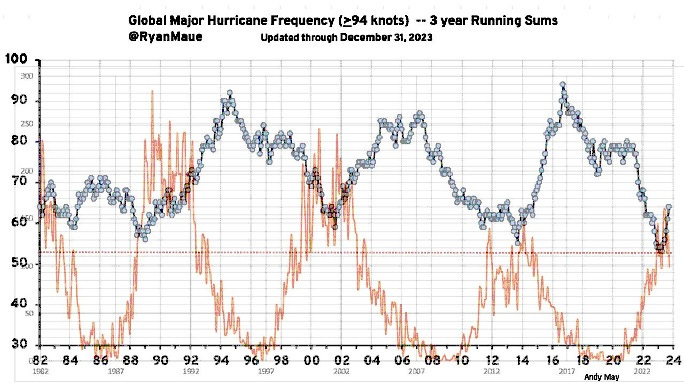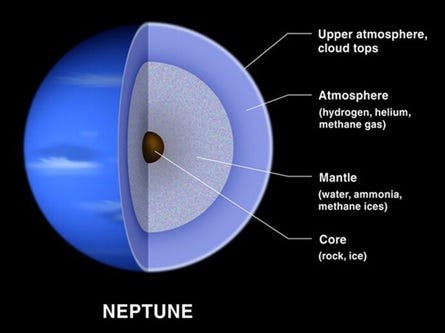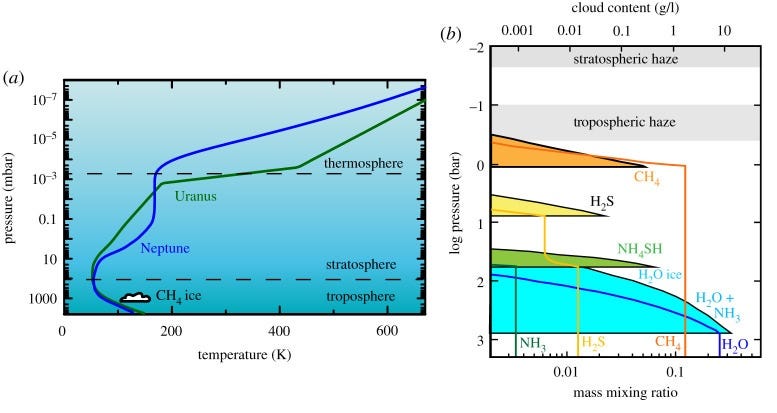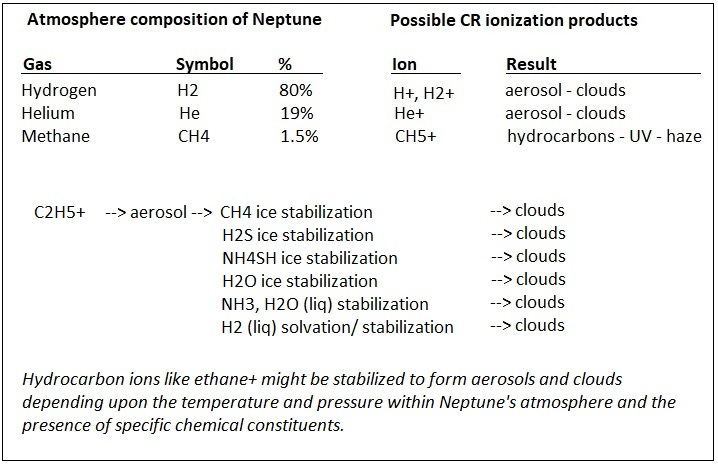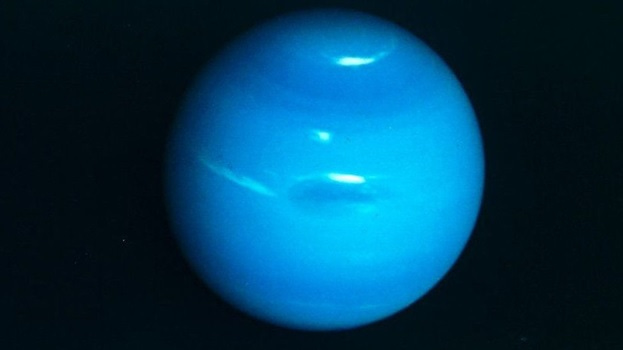The Story of Climate Change reveals a common connection to long timescale paleoclimate change. Cosmic rays entering our atmosphere ionize molecules there. The resulting aerosols and clouds envelope the Earth providing for a variable umbrella of sorts. More or less solar radiation hitting the Earth’s surface results in colder or hotter climate periods. We have seen the Hothouse and Icehouse climate epochs over the hundreds of millions of years instigated by our planet’s periodic passage across the structure of the Milky Way galaxy. The galactic structure - spiral arms and interarm spaces - provide the variable cosmic ray fluxes that are manifested as the periodic hot-then-cold periods we see in the geologic record. Further, our solar system’s out-of-plane galactic orbital oscillations direct climate changes over tens of millions of years. Cosmic radiation is galactic plane polarized and produces a warmer-then-cooler climate half-cycle of about 30 million years as our planetary system oscillates along its orbit. Our climate is further modulated by the Earth’s solar orbital dynamics - the Milankovitch cycles - which power climate changes over tens of thousands of years. This is especially notable during the Ice Ages manifested in the glacial-interglacial periods.
Solar activity driven climate change such as The Little Ice Age show climate influences on century to millennial timescales. What about our climate/weather on decadal time scales? Could the 11-year solar cycle influence the short timescale weather/climate phenomena such as ocean circulation cycles like el Nino, the Atlantic Multi-decadal Oscillation (AMO) or hurricane intensity cycles? In 2024, Roger Pielke Jr. posted a plot created by Ryan Maue of the frequency of global major hurricanes. This unpublished hurricane plot appears to be an inverse sunspot plot when overlaid with the SILSO (Sunspot Index and Long-term Solar Observations) monthly sunspot counts. In the figure below, the blue is Maue’s plot, and the orange is a plot of monthly SILSO sunspots. The anti-correlation is obvious and very interesting.
If the Svensmark cloud hypothesis is correct, increased solar activity, producing changes in the solar wind and interplanetary magnetic field, deflects more cosmic rays away from the inner solar system. This produces less ionization in the troposphere leading to fewer clouds with more solar radiation reaching the oceans. Warming oceans leads to a greater temperature differential between the poles and the equator which promotes more severe hurricane activity. The oceans however, have a significant thermal lag - it takes time to heat and cool this huge mass of water so we see a time lag of about 3 years after solar maximum until the severe hurricane frequency reaches its maximum. As we approach solar minimum increased cosmic ray ionization occurs producing more clouds and a cooling ocean. The pole/equator temperature differential then begins to decline with strong hurricane frequency also decreasing.
on earth as it is in the heavens
How about the long-term weather/climate on other planets in our solar system? Might it be influenced by galactic cosmic rays and solar activity just like here on Earth? Images of the clouds of Neptune (below) captured by the Hubble Space Telescope were obtained over nearly 30 years and are plotted vs UV radiation during the solar cycle. We see maximum cloudiness at solar maximum. This is just the opposite of the Svensmark hypothesis, which says maximum cloudiness should occur at solar minimum where cosmic ray intensity is maximum. Seems a paradox here.
This sequence of Hubble Space Telescope images chronicles the waxing and waning of cloud cover on Neptune. This nearly-30-year-long set of observations shows that the number of clouds grows increasingly following a peak in the solar cycle – where the Sun’s level of activity rhythmically rises and falls over an 11-year period. The Sun’s level of ultraviolet radiation is plotted in the vertical axis. The 11-year cycle is plotted along the bottom from 1994 to 2022. The Hubble observations along the top, clearly show a correlation between cloud abundance and solar peak of activity. One theory says that the increased ultraviolet radiation from the Sun, during its peak of activity, causes chemical changes deep in Neptune’s atmosphere. After a couple years this eventually percolates into the upper atmosphere to form clouds.
NASA, ESA, LASP, Erandi Chavez (UC Berkeley), Imke de Pater (UC Berkeley)
https://www.sciencedirect.com/science/article/abs/pii/S0019103523002440?via%3Dihub
Creation Story
In the beginning, about 4.6 billion years ago, the planet we now call Neptune was forged along with its primordial atmosphere composed mostly of hydrogen, helium, and nitrogen. Like Neptune’s sister planet, Earth, Neptune was blessed with an abundant atmosphere extending over four times further into space than here on our planet. Neptune is also much, much colder as it resides at 30 Astronomical Units (AU) from the sun. We, on the other hand, are a mere 1 AU from our sun. The planet is cold and mostly frozen. Neptune has about the same mass and gravity as the Earth concentrated at the earth-sized rocky core. All that atmosphere and frozen water and ammonia below makes for extreme pressure – up to 100,000 times that of Earth.
Back then, the intense solar wind of a young sun would slowly erode the upper atmosphere as Neptune had no protective magnetic field in the beginning. It was not until the cataclysmic collision with a moon-sized planetoid, that threw Neptune 28 degrees off its original rotational axis, created its thin rings, produced the 14 moons, and melted the planetary core. Just like on the Earth, a spinning core of molten iron settled neatly into Neptune’s central gravitational location. The new magnetic field flashed on and has been preventing atmospheric erosion by the sun ever since.
The original composition of the planet included hydrogen, helium, ices of water and nitrogen; elemental sulfur; carbon from carbonaceous chondrites, iron and other metals, and silicates from rocky asteroid aggregate. After impact, this blob of bubbling and hissing goo, began to undergo massive chemical transformations. All of that ice melted and exploded into reactive pockets as hydrogen drove the creation of methane from the carbon, ammonia from the nitrogen, and sulfides from the elemental sulfur.
Neptune Today
As things began to cool, a mantle of water, ammonia, and methane ices froze into a viscous slush over the ebullient core. Those gases that escaped the big freeze made their way to the reformed atmosphere. Today, Neptune's atmosphere is made up mostly of hydrogen and helium, a bit of methane and some other trace gases. The clouds are primarily composed of ammonia and methane. Temperatures are cold, around -275 F. Green and blue areas are where the red light from the sun is absorbed by methane. The planetary and atmospheric rotation segregates hundreds of times more methane, ethane and other hydrocarbons at the equator than at the poles. Ammonia ice, water ice, ammonia hydrosulfide, and methane ice are also present.
Technically, Neptune does not have a “surface”. Just above Neptune's rocky core sits a thick mantle of a hot dense slushy fluid of water, ammonia, and methane at pressures exceeding 100,000 times Earth pressure. Temperatures there can exceed 8000o F. Arising out of the mantle is the gaseous troposphere. As altitude increases, temperature in the troposphere decreases. In the next higher layer, the stratosphere, temperatures increase with altitude. This may be related to the differential motion of atmospheric layers and the heat escaping the planet's molten core. As a consequence, Neptune is heated more than the rays from the distant sun could provide. The next layer is the thermosphere, with pressures lower, and extreme temperatures - around 800 degrees Fahrenheit - where Neptune’s excess heat is finally radiated out into space.
The clouds of Neptune vary with the altitude. Cold temperatures allow methane clouds to condense in the highest layers of the troposphere. Farther down, where pressures and temperatures are higher, clouds of hydrogen sulfide and ammonium sulfide can form. Clouds of water-ice may be found at around 50 bar pressure, with clouds of ammonia beneath them.
(above) Global-average temperature–pressure profile of the atmospheres of Uranus and Neptune, with major regions of the atmosphere labelled (modified from Moses et al. Thermochemical equilibrium prediction of the upper-tropospheric cloud structure on Uranus (modified from Hueso & Sánchez-Lavega. The predicted mass mixing ratios of condensable gases are shown as colored solid lines, and the maximum cloud density as solid black lines with color-shaded regions.
Neptune also contains a couple of haze layers at the highest altitudes of the troposphere and the stratosphere. These smog-like clouds are made up of hydrocarbons. Much like smog over major cities on Earth, the face of Jupiter has an umber tone that waxes and wanes depending on seasonal hydrocarbon concentrations. The haze is formed by UV photochemical reactions with hydrocarbons condensed in these layers. Chemical reactions starting with cosmic ray-initiated ionization of methane create complex hydrocarbons. These compounds can form an interwoven network of obscuring haze during high UV periods. High cosmic ray periods during the solar minimum increases lower tropospheric aerosol formation and neutral hydrocarbon production while the UV contribution to haze formation decreases. During low cosmic ray periods during solar maxima, tropospheric aerosol and hydrocarbon formation decreases while the UV contribution to the haze layers increases. White methane clouds predominate during solar maximum and disappear during solar minimum. There should be a time lag between cosmic ray maximum during solar minimum and cloud appearance as the hydrocarbons produced in the lower troposphere need time to be transported to the higher altitude haze forming layers by Neptune’s convection currents driven by the planets internal heat engine and differential rotation. It has been noted that around two years after this higher UV emission begins, Neptune's clouds begin to appear.
Cosmic radiation induced ionization appears to be the main mechanism for ionizing the lower atmosphere of Neptune. It is thought that the higher penetration power in Neptune’s thick lower atmosphere, in comparison with solar UV photons, allows cosmic rays to penetrate deep into the lower atmosphere, ionizing the neutral molecules there and generating an ionosphere similar in magnitude to the ionosphere produced by solar radiation in the upper stratosphere. UV will be absorbed as it passes through the upper atmosphere, and perhaps be completely absorbed at around 1 bar (1 Earth Atmosphere) whereas highly energetic secondary cosmic rays, typically muons of several GeV, can readily penetrate the deep Neptunian troposphere driving haze forming hydrocarbons and cloud forming aerosols there.
If Svensmark’s cloud hypothesis works on Earth it should probably work on Neptune. On Neptune however, we see a reverse phase - minimum cloudiness appears to occur at solar minimum. This concurrence brings maximum cosmic radiation which should promote more clouds not less. Something else might be going on here.
In their 1989 paper, Neptune's visual albedo variations over a solar cycle: A pre-Voyager look at ion-induced nucleation and cloud formation in Neptune's troposphere, Julianne I. Moses, Mark Allen, and Yuk L. Yung wrote: High-energy galactic cosmic rays (CR) can penetrate to deep levels within Neptune's atmosphere to form a substantial ionospheric layer in the lower stratosphere of the planet. Because cosmic ray modulation in the interplanetary medium creates an inverse relationship between cosmic-ray intensity and solar activity, the ionization rate in the lower atmosphere will vary with the 11-year solar cycle in such a way that maximum ionization will occur at sunspot minimum and minimum ionization at sunspot maximum. This variable ionization may, by the process of ion-induced nucleation, regulate the formation and optical properties of an upper tropospheric haze in the atmosphere of Neptune and could thus provide a mechanism for modulating the planet's visual brightness over a solar cycle.
https://agupubs.onlinelibrary.wiley.com/doi/abs/10.1029/GL016i012p01489
Question: During solar maximum, is solar UV light the primary catalyst for cloud condensation and responsible for the progress of the observed cloud modulation? Svensmark says that the cosmic radiation intensity at solar maximum is at the minimum thus producing less tropospheric cloud forming aerosols and hydrocarbons. At solar maximum we observe solar UV is at the maximum, strongly ionizing the upper stratospheric and tropospheric haze layers while CR aerosol and hydrocarbon production in the lower troposphere would consequently be significantly reduced. This low concentration tropospheric fraction is transported to higher altitudes (with a time lag) where subsequent decreased haze formation increases upper troposphere transparency. In the solar maximum scenario, the increased UV contribution to stratospheric haze formation does not significantly reduce total atmospheric transparency as the hydrocarbons there diffuse into the larger upper atmosphere diluting their effect. It is not the clouds that are necessarily changing in response to solar UV, it is the modulation of tropospheric haze opacity by cosmic rays revealing the clouds already there. Svensmark’s cosmic ray hypothesis seems to apply once again - this time with a twist.
I think the same might be said for the atmosphere of the planet Uranus. This azure sphere with its wispy rings, is about a billion miles closer to the sun than Neptune but is much colder. Uranus does not have internal heat to supplement the distant sun. Uranus is extremely cloudy. The atmosphere has a similar composition as Neptune. The cold altitudes with abundant water-ice, methane-ice and ammonia-ice promote significant cloud formation. Water clouds can form at lower altitudes and methane clouds at higher altitudes. Uranus also has large quantities of hydrocarbons that provide the basis for high altitude haze formation – just like Neptune.
(above) Neptune and its clouds, (below) Uranus its thick cloud formations




